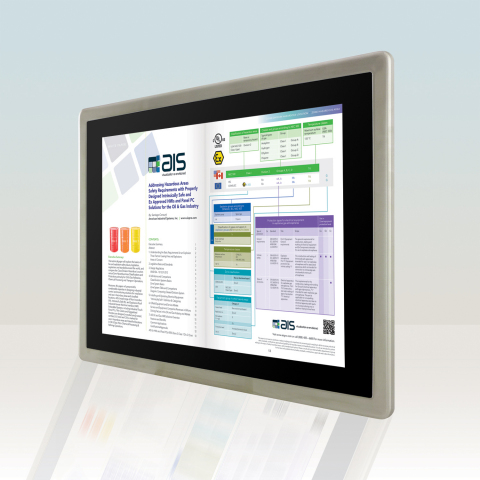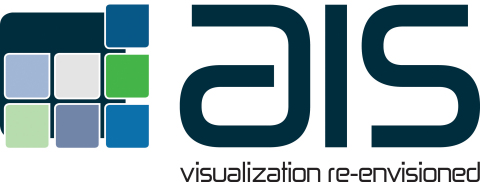IRVINE, Calif.--(BUSINESS WIRE)--American Industrial Systems, Inc. (AIS) has published a white paper on “Hazardous Areas and Classified Locations and the Various Protection Techniques and Methods Used to Achieve Safety” required for low voltage electrical equipment such as hazardous areas HMIs, control, remote monitoring and visualization equipment for Oil and Gas exploration, production and refining facilities (upstream, mid-stream and downstream operations) as well as petro-chemical processing plants. The white paper reviews the basics of safety hazards in oil and gas applications, what causes them, prevention, and legislation, standards and classifications for electrical equipment. It also presents AIS’s capability to design and manufacture intrinsically safe, ATEX approved HMIs and panel pc solutions for use in hazardous areas. The AIS white paper covers and reviews:
Understanding the Basics in Safety for Oil & Gas Hazardous Areas
The need for safety standards and precautions stem from two hazards and potentially lethal dangers that can occur in hazardous areas in the oil and gas industry: fires and explosions. In areas where flammable liquids, gases, or vapors may be present, the danger of a fire and explosion are imminent if the right conditions present themselves. Special consideration and study is given to the design of electrical equipment as it must be designed to minimize the risk of causing ignition when flammable substances are present.
Legislative Basics & Standards for Hazardous Areas and Locations in Oil & Gas
Explosion and fire protection is legislated by individual countries around the world. No other aspect of industrial safety receives more attention in the form of codes, standards, and engineering design than fire and explosion protection. As a result, it is a very complicated topic as there are different standards and classifications depending on the country, and international standards exist as well. Intrinsic protection and safety is achieved by meeting all regulations and standards.
Hazardous Areas Definitions, Classifications & Techniques
There are two basic systems used to gauge the probability of flammable substances present and the dangers they present for a fire or explosion. In North America, the method used is the “Class/Division” system with requirements set by the NEC/CEC. The system provides definitions for area classification, class, division, group and temperature. It also defines protection techniques including intrinsically safe measures. The other standard known as the “Zone standard” is predominantly used outside of North America. The Zone system classifies areas by zones and is further categorized by Divisions (I and II). Hazardous location areas are defined by taking into account the different dangers presented by potentially explosive atmospheres.
Installing & Maintaining Electrical Equipment for Safe Operation in Hazardous Areas
Manufacturers of HMI equipment, installers and plant owners have obligations to work together to achieve maximum safety in oil and gas operations. Simply put, manufacturers must design products that meet regulations and standards and are safe for use in hazardous areas; installers must follow guidelines for safe installation; and plant owners need to conduct safe operation, monitoring and scheduled maintenance/repairs of all electrical equipment.
AIS HMI and Visualization Solutions for the Oil & Gas Industry
AIS has extensive experience and background serving the oil and gas industry and have delivered intrinsically safe and Ex certified HMI touch screen interfaces and Panel PC solutions to the world’s top ten largest oil and equipment service providers over the past decade. Standard or custom HMI applications are designed to meet Class I and II, Division 2 and Class III, Divisions 1 and 2 Hazardous (Classified) Locations (North American Classification), and Zone 1/21 and 2/22 Hazardous Areas (European and IEC Classification) specifications.
AIS open platform HMIs are pre-loaded with Windows or Linux operating systems and feature a 15” high-bright screen. Completely constructed of stainless steel, AIS HMI Panel PCs and Thin Client systems are rugged, type 4/4X, IP 65/66, NEMA 4/4X enclosures with environmental ratings (UL 50 or IEC 529) on the entire system including fully sealed ports. Supporting operating temperatures ranging from -20 to 60°C (-4 to 140°F), they are suitable for a variety of applications including; drilling fluid control and monitor systems, drilling mud control, drilling operator cabins workstations, drilling rig control, drilling instrumentations, pipeline control and monitoring, refinery process operator control, machinery control systems, remote HMI, monitoring and control and more.
About AIS
Headquartered in Irvine, California, USA, American Industrial Systems, Inc. (AIS) offers in-house electronic and mechanical design, software development, manufacturing and production and quality control services. Offering one of the widest ranges of Industrial Computing solutions, AIS solutions are available in a multitude of configurations for Industrial, Oil & Gas, Military and Marine applications. The company is fully committed to empowering, improving and delivering turnkey HMI, monitoring and display solutions for OEM, ODM and end-user customers. AIS is an ISO 9001:2008 certified supplier and manufacturer of rugged computers and displays, and received completion of the International Traffic in Arms Regulations (ITAR) registration from the Directorate of Defense Trade Controls (DDTC). For more information, visit: www.aispro.com, email: sales@aispro.com or contact: 1-888-485-6688.




